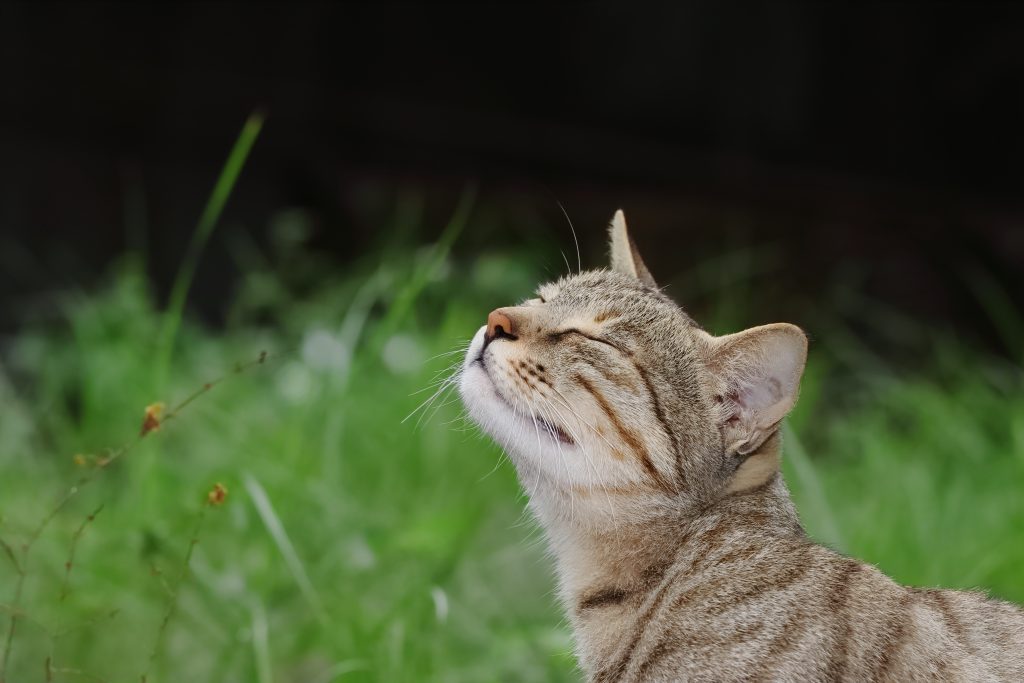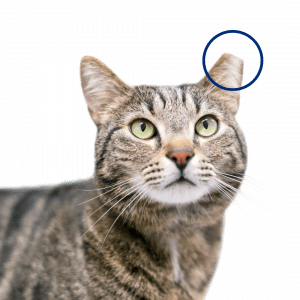What are Community Cats?
Community Cats are outdoor, unowned, free-roaming cats living within our community. These cats can be friendly, feral, adults, kittens, healthy, sick, altered and/or unaltered. They may or may not have a caretaker. They are part of the domestic cat species (Felis catus) just like indoor cats. These cats thrive and maintain good health while living with their feline groups, or colonies, in their outdoor habitats.
How to live with Community Cats?
Like wild animals that live within our neighborhoods, community cats naturally seek out places with food and shelter and are adept at finding these resources on their own. If they appear to be healthy, and thriving within the natural environment, it’s best not to bring community cats to animal shelters.
A more humane approach to managing community cats is to Trap-Neuter-Vaccinate-Return (TNVR) community cats to their outdoor home where they are thriving. In a TNVR program, community cats are humanely trapped, taken to a veterinarian for spaying or neutering, vaccinated, ear-tipped for easy identification, and then returned to their original outdoor homes. This approach helps control the cat population, reduces health risks, and enhances their overall well-being. TNVR not only improves the lives of cats but also offers a humane, effective, and cooperative way for communities to live alongside them.
The San Bernardino County Animal Care TNVR program is a compassionate, effective, and widely accepted method for managing community cat populations. For more information on how to participate in the San Bernardino County TNVR program, visit animalcare.sbcounty.gov/tnvr/.
What can I do about nuisance cats?
- Check with your neighbors to determine if the cats are owned, abandoned, or feral, and whether they are spayed or neutered. If a community cat appears to be unowned and not spayed/neutered (no visible ear-tip), please consider participation in our TNVR program or ASAP voucher program to help manage the local cat population.
- Use nontoxic deterrents around your yard.
- Ensure your garbage cans have tight-fitting lids.
- Trim overgrown bushes and shrubs and remove any places where cats can hide.
- Seal any gaps in the foundation of sheds and porches.
- Feed your pets indoors or establish a set feeding time outside.
- Avoid leaving food outside.
Like all animals, community cats are protected by California’s animal anti-cruelty laws under Penal Code Section 597a. Violating these laws can result in at least one year in prison, a fine of up to $20,000, and a felony record if you maim, kill, or poison a community cat.

FAQ
Although we no longer accept healthy, adult cats at San Bernardino County animal shelters and encourage residents to participate in the TNVR program, each cat presented for intake will be evaluated on its individual circumstances and may be admitted to the shelter, if necessary. For example, during a severe winter weather event in the mountains, a stray adult cat presented to the Big Bear Shelter may be admitted for its safety.
If you come across kittens outdoors, it’s important to understand that the mother cat is likely nearby, caring for them. It’s important to leave the kittens undisturbed to allow their mother to look after them. It’s generally recommended to wait until the kittens are at least 8 weeks old or weigh around 2 lbs. before considering their participation in the TNVR program.
Community cats thrive in their outdoor environments. The TNVR program is a humane and effective approach that involves spaying or neutering, vaccinating, ear-tipping for easy identification, then returning these cats to their outdoor homes. This approach promotes the welfare of the cats, contributes to their overall health and happiness, and helps to effectively control the population of community cats.
A straightforward way to identify if a community cat has been spayed or neutered is by looking for an ear tip. An ear tip refers to the surgical removal of approximately ¼ to ½ inch from the tip of one of the cat’s ears.

Please check for a collar and tags, post ‘found’ notice flyers around your neighborhood, create a found report on www.petcolovelost.org, and have the cat scanned for a microchip at the animal shelter or a local veterinary clinic.
The primary goal of the community cat policy is to keep community cats out of the shelter system and allow them to continue thriving in their existing environments. If a microchip is found on a cat, Animal Care will make every effort to help you reunite the cat with its owner. However, Animal Care may take the microchipped cat if you are unable to keep it until it is reunited with its owner.
It’s common for outdoor cats to seek out places with readily available food and water, as well as dry and warm environments. If cats frequent your yard, consider modifying the habitat to remove any food and water sources. Additionally, cut back any overgrown bushes and shrubs, and seal any access under your deck or outbuildings. If you feed your pets outside, try relocating their food source to a more secure location and remove any leftover food overnight. If cats are leaving paw prints on your car, using a car cover can help protect your vehicle.
These behaviors are associated with mating and reproductive activities. If the cats are eligible, consider participating in our TNVR program or ASAP voucher program. By spaying or neutering the cats, these behaviors can be effectively minimized, contributing to the health and well-being of the cats and helping in managing the community cat population.
Please contact Animal Care right away.
Additional resources
- California Animal Welfare Association
- Million Cat Challenge
- Maddie’s Fund
- American Society for the Prevention of Cruelty to Animals (ASPCA)
- Humane Society of the United States (HSUS)
- Best Friends Animal Society
- National Animal Care & Control Association
- Alley Cat Allies
- How TNR Reduces Nuisance Complaints About Cats